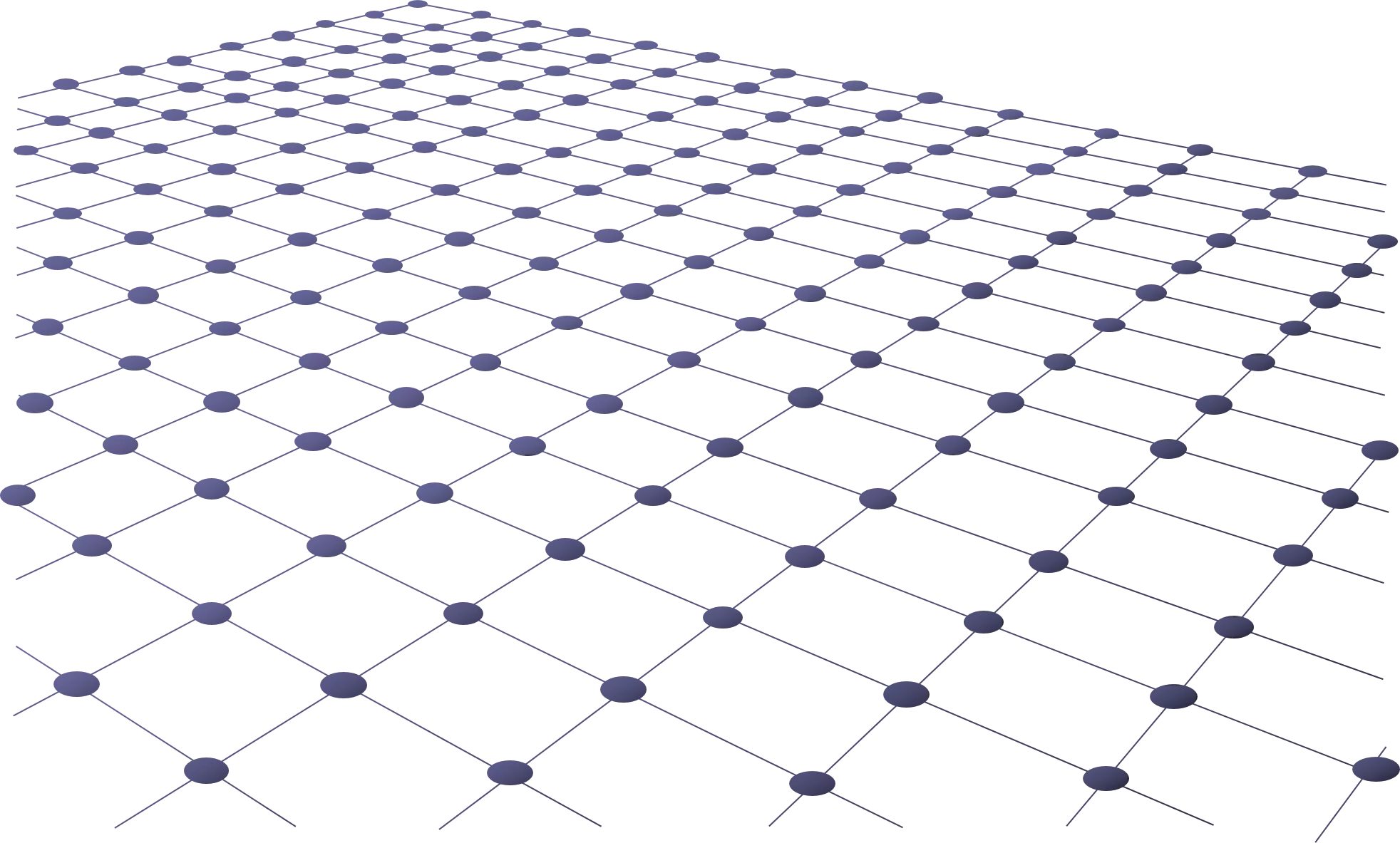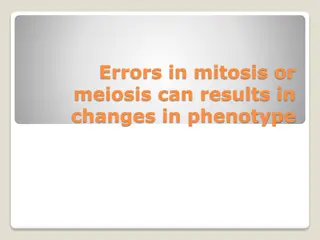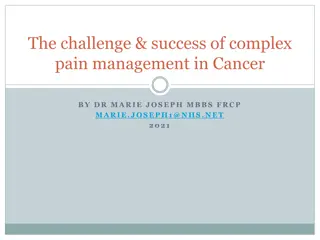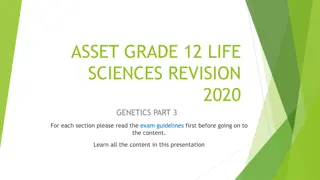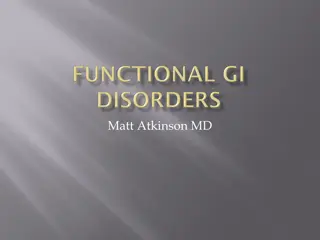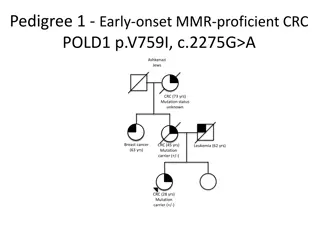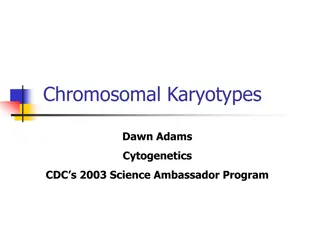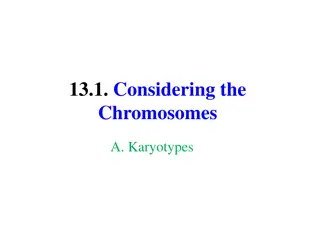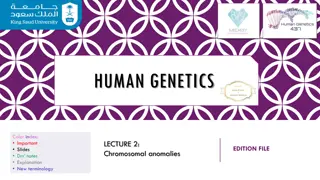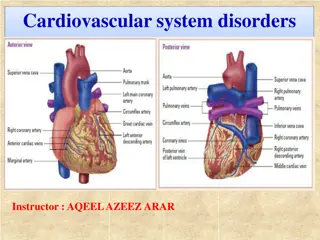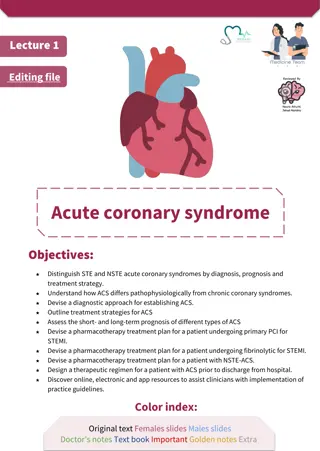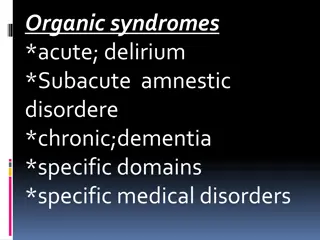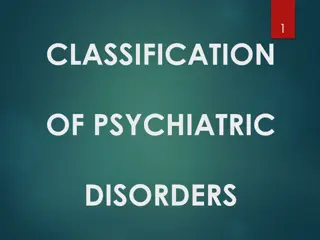Chromosomal Disorders and Syndromes in Humans
Human chromosomes play a crucial role in determining genetic traits and health conditions. An extra copy of chromosome 21 leads to Down syndrome, while conditions like Klinefelter's syndrome, Turner's syndrome, Trisomy 13, 18, and 23 have distinct symptoms and implications. Trisomies result from abnormal cell division during egg or sperm formation. Diagnosis and implications of disorders like Edward's syndrome are also discussed. Chromosomal disorders have significant impacts on physical and cognitive development.
Download Presentation

Please find below an Image/Link to download the presentation.
The content on the website is provided AS IS for your information and personal use only. It may not be sold, licensed, or shared on other websites without obtaining consent from the author.If you encounter any issues during the download, it is possible that the publisher has removed the file from their server.
You are allowed to download the files provided on this website for personal or commercial use, subject to the condition that they are used lawfully. All files are the property of their respective owners.
The content on the website is provided AS IS for your information and personal use only. It may not be sold, licensed, or shared on other websites without obtaining consent from the author.
E N D
Presentation Transcript
Human chromosomes There are 46 chromosomes (23 homologous pairs) in each somatic cell 22 pairs of autosomes 1 pair of sex chromosomes XX = Female, XY = Male Karyotype - chromosomes are arranged according to shape and size
AN EXTRA COPY OF CHROMOSOME 21 CAUSES DOWN SYNDROME This condition is called trisomy 21. Person with this condition suffers from the Down syndrome. Characteristic facial features: Round face Flattened nose bridge Small, irregular teeth Short stature Heart defects
Klinefelter's syndrome, 47, XXY It is the most common sex chromosome disorder and the second most common condition caused by the presence of extra chromosomes Symptoms: - Language impairment - Lanky, youthful build or rounded body type - Low levels of Testosterone and small testicles / Infertile
Turners Syndrome (X) Common symptoms: Short stature swelling of the hands and feet Broad chest and widely spaced nipples Low hairline Low-set ears Reproductive sterility Increased weight, obesity Small fingernails Characteristic facial features Webbed neck
A healthy egg or sperm cell contains 23 individual chromosomes - one to contribute to each of the 23 pairs of chromosomes needed to form a healthy, 46 chromosome cell. However, sometimes egg and sperm cells are left with 24 (or more) chromosomes. It is the joining of these egg or sperm cells that eventually cause a trisomy fetus to be formed.
Trisomy 18 Edward Syndrome Because Trisomy 18 is caused by non- disjunction, it cannot be passed on to future generations. In addition, babies diagnosed with Edwards syndrome rarely live past 5-6 days; fetuses identified with Trisomy 18 are often miscarried or aborted.
How Is it Diagnosed? Edwards' syndrome at birth may be diagnosed by the physical abnormalities characteristic to the syndrome. In addition, physical examination of the infant may show arched type fingerprint patterns and xrays may reveal a short breast bone. Definitive diagnosis is achieved through karyotyping, which involves drawing the baby's blood for a microscopic examination of the chromosomes.
How Is it Diagnosed? Edwards' syndrome can be detected before birth. If a pregnant woman is older than 35, has a family history of genetic abnormalities, has previously conceived a child with a genetic abnormality, or has suffered earlier miscarriages, she may undergo tests to determine whether her child carries genetic abnormalities. Potential tests include maternal serum alpha-fetal protein analysis or screening, ultrasonography, amniocentesis, and chorionic villus sampliing.
How Is it Treated? There is no cure for Edwards syndrome. Ninety to 95 % of all babies born with it die within a year of birth. The few infants that do survive need special treatment--ranging from muscular therapy to nervous system and skeletal corrections--for their various handicaps.
Patau Syndrome Trisomy 13
Description Patau syndrome - also known as trisomy 13. Affects about 1 in 12,000 live births. More than 80% of infants with Patau syndrome die within their first year of life.
Common Problems Nervous system problems: Mental and motor disabilities similar to that of autism Microcephaly, or a less rounded brain resulting in more of an egg-shaped skull Eye structure defects: Microphthalmia, or crossed eyes (may involve one eye or both) Cataracts Sensory Nystagmus, or involuntart twitching of the eye Optic nerve hypoplasia, or the underdevelopment of the optic nerve
Common Problems cont. Muscular and skin problems: Polydactyly, or extra fingers/toes Low-down ears Prominent heels and deformed feet, called rocker- bottom feet Strange palm patterns, commonly called the Simian line Overlapping of the fingers over thumb Cleft palate
Treatment There is no treatment to address the condition. However, there are procedures to sustain life for a bit. Most times, surgery is required to fix defects to allow the child to survive for as long as possible. Since most infants with Patau syndrome die within the first year of life, special management/procedures are necessary; this is very complex and carefully laid out. Many children have trouble surviving the first few days or weeks of life due to severe neurologic and vascular problems.
What is Triple X syndrome? Triple X syndrome is a disability of the chromosomes that affects about 1 in 1,000 females. Females usually have one X chromosome from each parent but in Triple X syndrome, the female has 3 X chromosomes. This usually results in an error in the formation of a mother s egg and the father s sperm cell. Normally people have 46 chromosomes, which is 23 pairs. This condition is genetic but its not inherited.
Symptoms Triple X syndrome may not cause any signs or symptoms. If they do appear, it may include: Tall stature Small head (microcephaly) Vertical skin folds that may cover the inner corners of your eyes Delayed development of certain motor skills, speech and language Learning disabilities such as dyslexia Weak muscle tone Seizures Kidney abnormalities
Treatments Treatment is based on your symptoms. For instance, if she has a learning disability, she would require some counseling. If your daughter has been diagnosed with Triple X syndrome, your doctor may recommend periodic screenings throughout childhood. Psychological counseling may help if your daughter is becoming stressed. The chromosome change cannot be repaired, so this syndrome has no cure. However, if you do treat your symptoms you can live life normally despite your syndrome.
Treatments Treatment is based on your symptoms. For instance, if she has a learning disability, she would require some counseling. If your daughter has been diagnosed with Triple X syndrome, your doctor may recommend periodic screenings throughout childhood. Psychological counseling may help if your daughter is becoming stressed. The chromosome change cannot be repaired, so this syndrome has no cure. However, if you do treat your symptoms you can live life normally despite your syndrome.


